“NOT GOOD ENOUGH”
The sound was loud enough to tear me away from my phone (I was watching How I Met Your Mother) and foam roller. I turned my head to see two women doing push-ups on the artificial turf floor of the gym.
First, I winced. I’ve done push-ups on that floor before, and it really digs into your hands.
Then I noticed that, with every rep, one woman would yell at the other. The rep was “NOT GOOD ENOUGH” or “GET LOWER” or, a couple of times, “YEAH, KEEP GOING!”
The sounds could only mean one thing: it was January.
I don’t usually pay much attention to other people in the gym. If you aren’t using the equipment I need, asking for a spot, spotting me, or doing something seriously impressive, I’m probably dialed into my own workout.
Of course, if you start yelling at someone 3 feet away from me, I’ll probably notice. And I noticed the next time I saw those two women shouting at each other. And the next.
Until eventually I noticed that I hadn’t seen them for a while.
Why am I telling you this story? All of this happened last January, in the weeks immediately after New Years. As anyone that works out regularly can tell you, fitness resolutions make January the busiest month of the year. But as this story illustrates, the “resolutioners” fall off the map quickly.
Hopefully that isn’t you. Hopefully you can work out consistently in 2017. Hopefully you can do it without getting yelled at.
Here are some things I put together to help you out.
Achieving Your Fitness Resolutions
Fitness resolutions aren’t just the most popular New Year’s resolutions; they are the TWO most popular (according to surveys by Nielsen, a market research company). The two most common resolutions are “stay fit and healthy” and “lose weight.”
But only 8% of people achieve their New Year’s Resolutions.
There are a lot of reasons to flake on a fitness resolution, some of which you’ve probably experienced.
Some common ones:
- You feel like you barely have any time, and want to use it to relax
- You feel uncomfortable going to the gym, because you aren’t sure what to do and feel judged or self-conscious
- You don’t know what kind of workout to do or what to eat to get fit
You might have others, but whatever the reasons, it’s easy to wake up and realize 3 weeks have gone by without a gym sesh. It’s easy to give up on fitness resolutions.
Below are the best articles I wrote in 2016, articles that tackle the best advice I have to give when it comes to feeling confident in the gym, consistently working out, and eating right. Hopefully they can help with keeping your fitness resolutions.
To save you a click, I’ve included a brief summary of each article. Reading the whole article will definitely give you some extra benefits, but the summaries are a good place to start.
Where to Start for Your First Day at the Gym: The Overview Articles
What to Do on Your First Day At The Gym
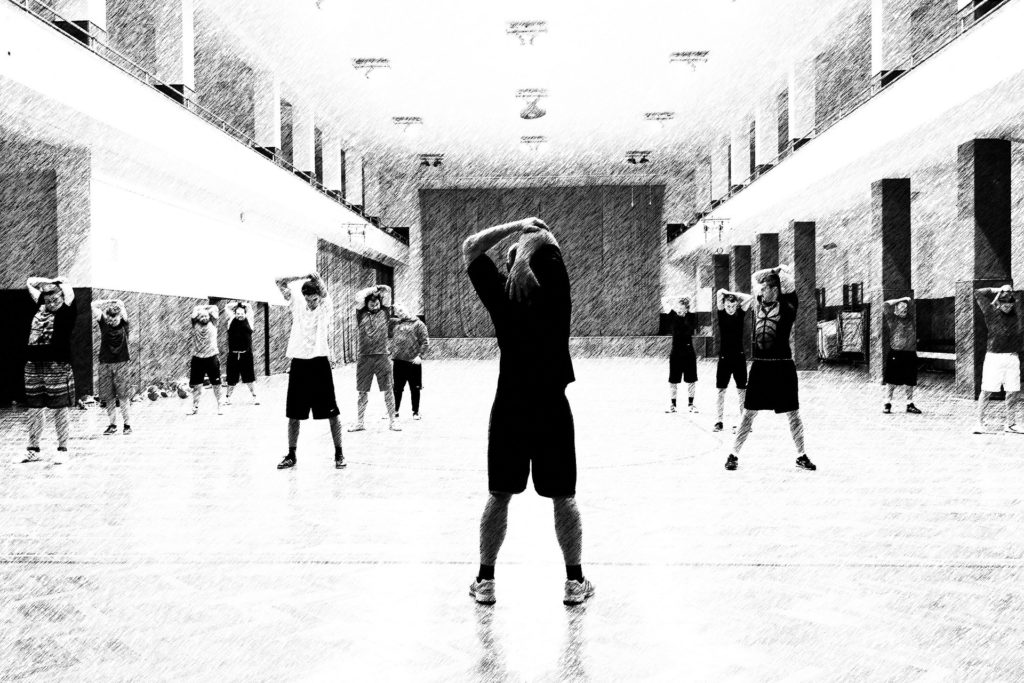
I’ve written about my first day a few times—because it was terrifying.
This article is all of the things I wish I knew on my first day, and should help you start working towards your health and fitness resolutions. It includes:
- A simple, 5 exercise workouts for your first day (goblet squats, push-ups, Romanian deadlifts, inverted rows, planks)
- Answers to common questions, from “what are sets and reps” to “how much weight should I use”
- A quick technique, borrowed from cognitive-behavioral therapy, to stop feeling judged at the gym (the short version: logic the hell out of negative thoughts)
- The 5 unwritten rules of the gym
- don’t bother someone in the middle of a set
- don’t curl in the squat rack
- re-rack your weights
- be the right amount of social
- asking for a spot is totally ok
- Exactly what to say if you need to ask for a spot
- What you need to bring to the gym (and what not to bring, like gloves, shoes, or other fancy stuff).
- When the gym is least crowded (varies by gym, but Friday/Saturday evenings tend to be the least busy. Thursday evening is the least busy weeknight, Monday the busiest).
There’s info about all of the biggest problems people usually have at the gym. Have a problem that isn’t answered? Shoot me a message and I’ll add it in.
Why Does Everyone Hate Exercise and Love Fitness?
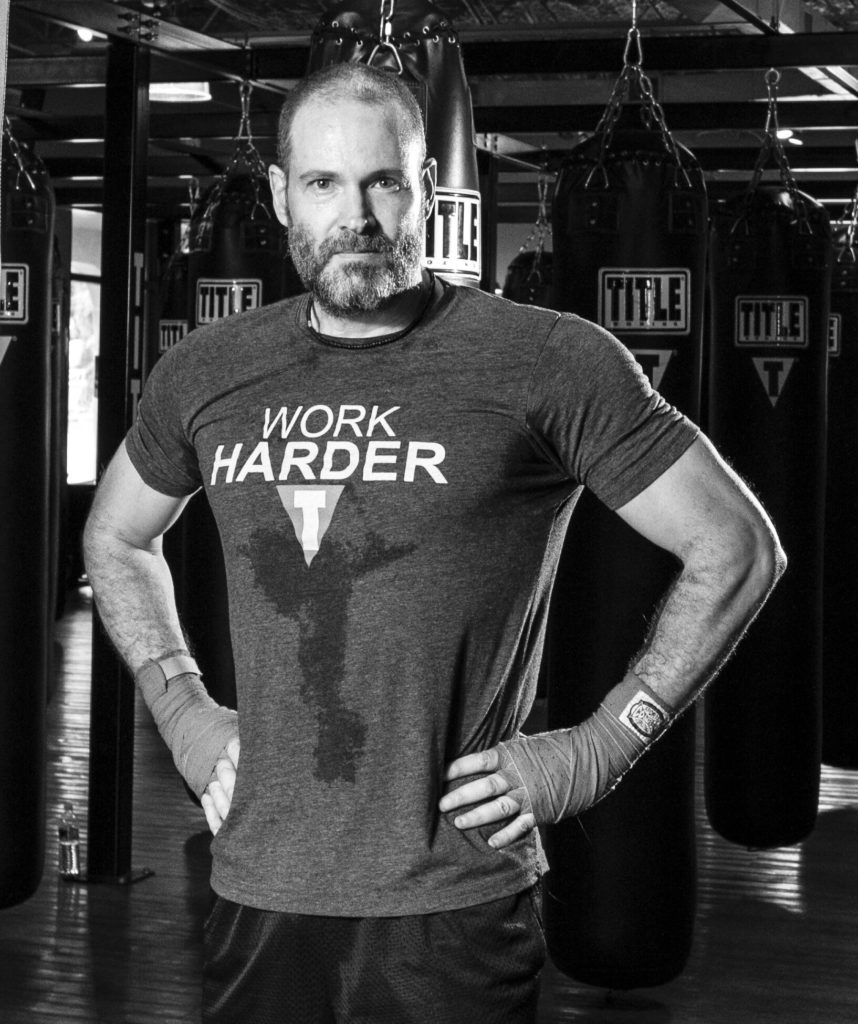
Having someone scream at you is not going to help you work out more.
If I’m being honest, this article is a bit of a rant. With examples from pop culture, research from psychology, and depictions of exercise in the news, I argue that the common view of exercise (as something horrible that we dread) is counterproductive and inaccurate.
If done in a healthy (physiologically and psychologically) way, exercise can have an incredible effect on mental and physical well-being. If done like the two women in the story at the beginning of this article, you’re sure to give up on your fitness resolutions.
I do suggest you read the whole article to start adjusting your beliefs about exercise, but here’s an excerpt from the final section:
“We live in a society that vilifies exercise, glorifies fitness, and encourages laziness. We are constantly exposed to messages that make us feel insecure and inadequate. Every day, people are treated poorly because of their weight, despite a culture telling them that working out is next to impossible. Movement does not need to be miserable; the human body is an incredible machine with incredible capabilities. We need to appreciate that.”
Work Out Consistently: How to Stop Skipping Workouts
Don’t Just Do It – A 5 Step Technique to Consistently Go to the Gym
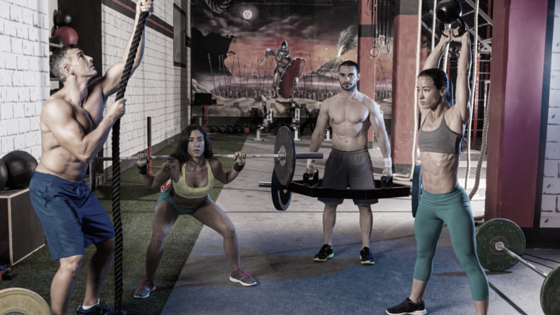
The first article published on Routine Excellence, and still the most popular. If anything on this list will help you keep fitness resolutions, it’s this.
The article is long enough to be split into two parts. Again, there’s a lot of additional detail in the article.
Part 1: Tactics for Habit Building
- Chaining: Connect working out to something you already do, so that you can run on autopilot
- Precommitments: Decide when to work out (and what to do) in advance, so you aren’t making moment-to-moment decisions affected by your mood
- Rewards: Most rewards suck. Use rewards that are small, regular, and somehow related to the actual action of working out. Don’t use punishment.
- Remove Barriers: There are lots of subtle things that make you less likely to work out. Identify and eliminate them.
Part 2: The 5 Steps
- Step 1: Set specific, realistic goals that have personal meaning to you
- Step 2: Identify checkpoints, moments to assess your progress and make adjustments
- Step 3: Identify the biggest challenges you will face to achieving your goals
- Step 4: Brainstorm ways to solve those challenges in advance
- Step 5: Put all of this planning together in a single document—your roadmap to fitness
Brainstorming challenges is where this branches off from a lot of common advice, and is a super important part of the process. By planning for challenges and coming up with strategies in advance, you can stop yourself from burning out or giving in to momentary temptations.
Why Do You Set Unrealistic Goals?

In an elaboration on the goal-setting advice in “Don’t Just Do It,” I lay out the reasons you set unrealistic goals—and why that may not always be such a bad thing.
Unrealistic goals are usually the result of two factors: optimism and uncertainty.
When we’re setting goals, we’re on top of the world! Ready to wrestle with an alligator, tussle with a whale, and get to the gym twice a day for 8 weeks.
But we don’t do a great job of planning our fitness resolutions because we forget about or discount the challenges we’re sure to face.
At the same time, we often don’t know enough to set realistic goals when we’re starting out. How long do you think it takes the average person to lose 10 pounds, assuming they’ve done everything perfectly? Most people won’t be sure, which makes it hard to set a realistic goal.
That said, unrealistic goals are not the devil. Be honest with yourself, sure; you probably won’t start off by working out 10 times a week. But as long as you have checkpoints in place, you can adjust your goals as you go.
It’s Not Really About the Goal: How to Set Good Fitness Goals

A second elaboration of the goal-setting advice in “Don’t Just Do It” pushes you to set goals that are personally meaningful.
Say you want to lose 10 pounds. Great, but what does that mean for your life? How will your life change for the better once you achieve your goal?
Will you feel more confident and comfortable in your body? Will you be able to fit into those pants that have been hanging, too small, for years in your closet? How will friends you haven’t seen for a while react when they see you?
I’m not telling you to fantasize (which, as the article goes into, makes everything worse). But I do want you to appreciate why your goals matter to you. Clearly stating that will help you stay consistent and keep your fitness resolutions.
Why are they your goals instead of someone else’s?
The Reason Most Rewards Don’t Work – And How Yours Can

What’s with the people that tell you to adopt a dog as a reward for going to the gym?
Don’t get me wrong—dogs are awesome. But they aren’t exactly appropriate as a reward for working out. They won’t really help you keep your fitness resolutions.
Most of the commonly recommended rewards suck, because they don’t have the characteristics that research tells us make rewards effective. The key characteristics are:
- Acclimation: If the reward is something that you already have, that’s not particularly appealing, or that’s not really special, it probably won’t help you much (food isn’t rewarding to a stuffed person)
- Immediacy: The reward needs to come shortly after the behavior you’re trying to reward. Reward yourself right after you work out, not at the end of the week.
- Contingency: The reward should happen after the behavior and not be something that happens all the time.
- Size: A big reward is more effective than a small reward, BUT a big reward can also make you less likely to enjoy the activity (because you’re “just doing it for the reward”).
Most rewards happen to long after going to the gym (not immediate), are things you could just cave in and get at any time (not contingent), and are too big (decrease your enjoyment of the gym, and is just hard to pull off).
The full article includes some ideas for ways to more effectively reward yourself.
Feel Comfortable in the Gym to Keep Fitness Resolutions
How to Stop Feeling Judged at the Gym: The Psychology of Gym Anxiety
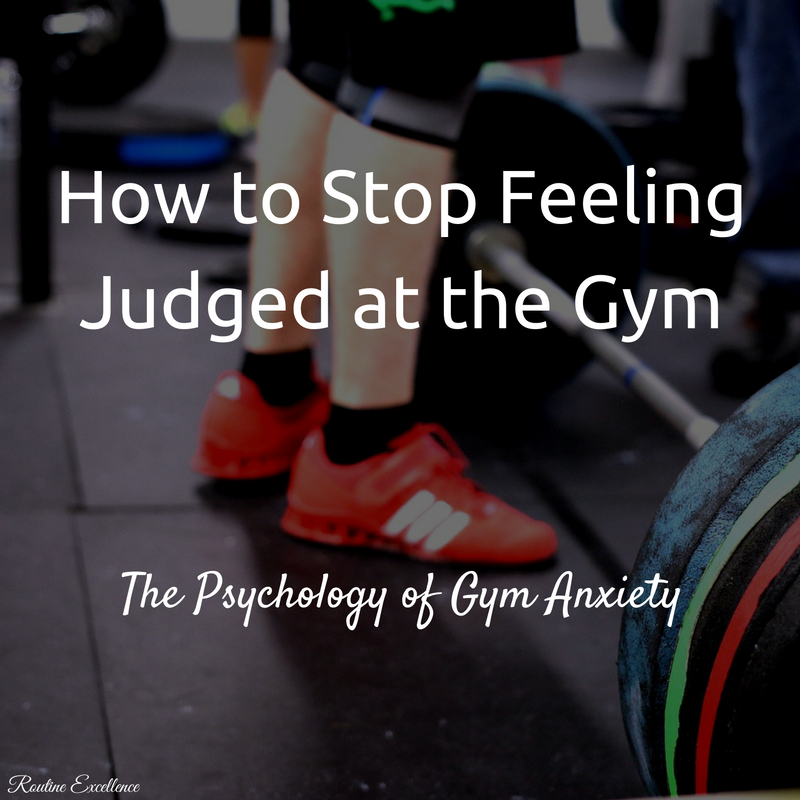
I was terrified on my first day at the gym, and I’ve seen that same fear in people I’ve trained and spoken to. It’s a real problem in keeping fitness resolutions.
Overcoming fear of the gym is something that most fitness professionals don’t really touch on, because it isn’t really a fitness problem—it’s a psychological one.
Sure, you’ll probably hear that “no one is judging you,” but that’s only one of the problems (and hearing it is different from believing it).
There are 4 psychological reasons for gym anxiety:
- Being uncertain: Not being sure what to do, how to do it, or what results you’ll get is stressful
- Social comparison: Comparing yourself to super fit people can make you feel worse about yourself
- Feeling judged: If you think people are watching and judging, you’re likely to get anxious
- Feeling like you don’t belong: No one likes being left out of the group. Feeling like you don’t belong makes you less likely to come back.
In the article, I go into each cause in depth, citing psychology research to support the existence of the cause and my recommended solutions. Solutions include:
- Rigorously study your chosen routine before setting foot in the gym. Better yet, get a good trainer to help you out and tell you exactly what to do.
- Focus on what you are doing instead of other people. Do this by paying attention to specific cues during each exercise.
- Reassure yourself, with pen and paper, that you aren’t being judged (and that other people can’t affect you if you are). Out-logic your cognitive distortions.
- Show up. The more you show up and learn about fitness, the more comfortable you’ll be in the gym.
Fear of the gym is a real problem, but it’s nothing to be ashamed of. Breaking down its causes can help you find answers and solutions, and achieve your fitness resolutions.
5 Experts on Overcoming Gym Anxiety: How to Overcome Embarrassment at the Gym
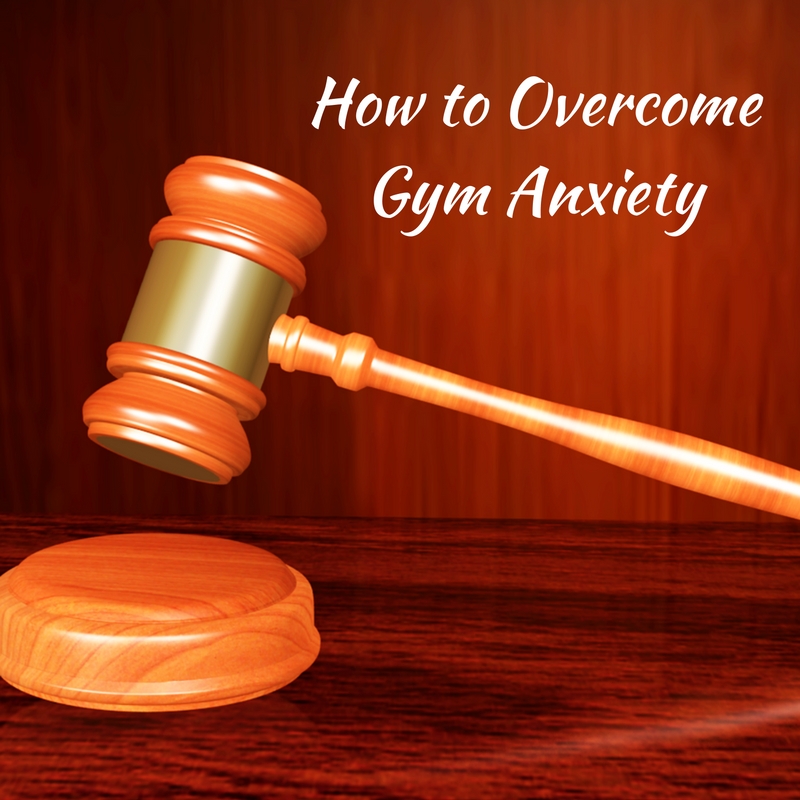
I also caught up with 5 fitness and habits experts to get their thoughts on overcoming gym anxiety, a key step in reaching your fitness resolutions. I’ll let the experts speak for themselves (in the article), but this is who they are:
- Steve “SJ” Scott of Develop Good Habits
- Slyvon Blanco of Von Blanco Fitness
- Dan Western of Wealthy Gorilla
- Mike Samuels of Healthy Living Heavy Lifting
- Stephen Guise, Author of Mini Habits

Incredible. That’s what it feels like to be fit.
It’s hard to sum this one up, because it’s more a story than anything else. If you struggle to get to the gym and keep your fitness resolutions because you aren’t sure what to do, because it’s uncomfortable, or because it makes you nervous, rest assured that I was once the same way.
This is the story of overcoming that fear, and why it’s been incredibly, overwhelmingly worth it.
How to Start Working Out
How to Choose a Beginner Weight Training Program that You’ll Stick to
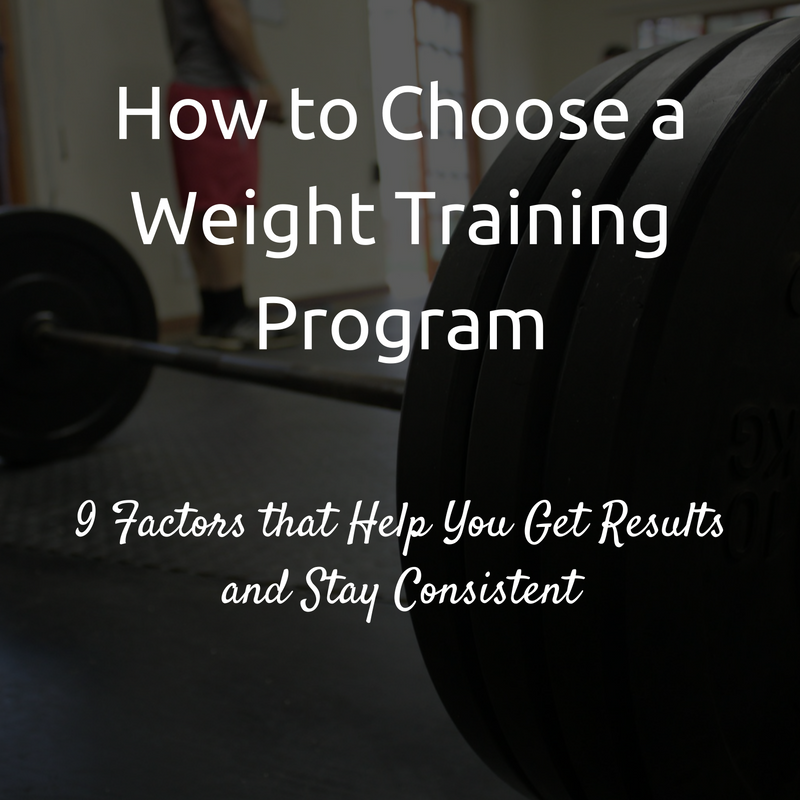
There are a million workout programs out there on the internet. How do you know which ones are effective? Which ones will help you achieve your fitness resolutions?
This article covers the key elements of a fundamentally good workout, but it also covers the factors that make you more likely to stick to that workout over the long haul. That’s key for fitness resolutions.
Some workouts are easier to stick to than others. These 5 factors affect that:
- Time: How long does your program take?
- Complexity: How confusing is your program?
- Progression: Can you see yourself making progress?
- Punishment: How do you feel after a workout?
- Credibility: Do you believe that your program will get results?
What kind of workouts get results? Those that have:
- A focus on compound exercises
- Built-in progressive overload
I go into more depth on each point in the article, but essentially you should be focusing on exercises that work more than one body part at a time and a workout program that gradually gets more challenging.
What exercises should you do? There are 5 main categories:
- Hinge: Movements that involve bending the hip without much bending of the knees
- Squat: Movements that involve bending the hip and the knees
- Push: Movements that push things away from you or push you away from things
- Pull: Movements that pull things towards you or pull you towards things
- Core: Exercises that train your abs and overall core
A good workout program will have a balance of each exercise category.
The rest of the article answers some of the other common questions about working out. How do you get abs? How should you warm up?
I include a progression for squatting and deadlifting that’s good for beginners, add in thoughts about single-leg and single-arm exercises, and serve up a warm-up that includes mobility work good to do before most workouts.
Choosing from 5 Popular Beginner Lifting Programs
After my breakdown of what makes a good program, people wanted to know: what are some good programs?
Having a good program is a big step towards achieving your fitness resolutions. Here, I review 5 popular beginner programs, both for their effectiveness at getting you fit and for how easy they are to do consistently. The full reviews are inside, but the overview is:
- Starting Strength/Stronglifts: Not my favorite program, but it’s very simple and easy to understand. Steady progressive overload means you’ll get results if you do it right, but you’ll want to switch after a few months.
- Ice Cream Fitness: Very similar to Starting Strength/Stronglifts, but with more upper body work for those people looking for dem arms. The downside is that the program takes much longer.
- Reddit’s Pull Push Legs (PPL): Has a really solid balance of exercises and the workouts are pretty short. The downside is that there are more of them, although some people find that easier than frequent rest days.
- Nerd Fitness Beginner Bodyweight Circuit: Not a long term workout plan, but a very accessible place to start for beginners.
- Westside for Skinny Bastards (WS4SB): A great program. Great balance of exercises with a reasonable number of workouts per week. The downside is that it’s a smidge more complicated than other options.
How to Eat Healthy
It’s Not Because You’re Hungry – 14 Ways to Control Your Eating
Food is necessary for survival, and hunger is how our bodies tell us to eat more food. Simple, right?
Not exactly. Somewhere along the line, our brains got involved and made eating much more complicated. Hunger isn’t the only reason we eat; this article walks through some of the other reasons, and how to manage them to keep from accidentally overeating.
As a side note: I used these techniques to intentionally gain weight when I hadn’t been eating enough. But when I started to slip off the rails and unintentionally gained 10 pounds in a month, I was also able to lose the extra without putting in any extra work.
Part 1 covers the reasons you eat:
- Social eating: When other people are eating, it’s natural to eat. You might not even notice that you’re eating, and so many social events involve food.
- Time-based eating: It’s 12 pm. Time for lunch! Whether or not you’re hungry, it’s easy to start eating just because it’s a time when people usually eat. The answer to the question “are you hungry?” is often another question: “what time is it?”
- Clean plate eating: If there’s food in front of you, you’ll probably eat it. Clearing your plate is something most people are taught in childhood, and it extends into adulthood. It’s very easy to keep eating just because food is there.
- Dish size: Study after study shows that people serve themselves more food and eat more of it when using a larger plate.
- Barriers to eating: If eating is easy, you’ll eat. Making it harder to eat makes you less likely to eat. Ever say “take this away from me so I stop eating?” That’s what’s happening.
Part 2 includes 14 ways to control your eating:
- Use smaller dishes: Either get smaller plates, or fill half the plate up with something light before getting to the meat of the meal.
- Don’t keep dishes at the table: Keep the pot away from the table to make it harder to grab seconds.
- Get a new plate for each serving: Dishes will pile up, but having a reminder of what you’ve already eaten makes it harder to eat mindlessly.
- Slow down: It takes time for your body to realize it’s full. Eat slower to make sure you stop when you’re full instead of stuffed.
- Be mindful: Be intentional about what you eat and notice the food you are eating to stop yourself from accidentally overeating.
- Hide your snacks: You can’t snack if you don’t have snacks. Don’t buy new snacks and bury the ones you have in the back of your pantry.
- Never eat from the bag: Pour some out and eat from that instead. Eating from the bag is what makes you accidentally demolish a whole thing of Doritos.
- Use a counter: Do you keep track of how many snacks or treats you have in a day? Keeping a tally can help you avoid impulsive eating.
- Swap, don’t stop: If you have trouble giving up snacking, try replacing unhealthy snacks with healthier, lower calorie snacks.
- Search your feelings: There are probably reasons unique to you for overeating. Dig deep and figure them out so that you can deal with them strategically.
- Meal prep: If you have meals prepped in advance, there are fewer barriers to healthy eating and you’re less likely to give in to takeout.
- Get better at cooking: Reducing the barrier to healthy food makes you more likely to eat healthy food. If cooking gets easier, you’ll cook more.
- Track the cost of eating out: If you put an actual number to how much eating out is costing you, it will be easier to stop (that shit’s expensive yo!).
- Portion control: Divide up your meals before you start eating. When you reach a certain checkpoint, pause to decide whether to keep eating or save the rest for later.
Check out the article for specific ideas on how to implement each tip.
How to Eat Healthy When You Don’t Like to Cook
In a guest post over at Von Blanco Fitness, I walk through some ways to eat healthy when cooking feels like a chore.
For people that didn’t grow up with a lot of home-cooked meals or don’t have a ton of culinary knowledge, it’s easy to lapse into takeout or pre-made meals: those are the “defaults.”
In order to overcome defaults, you need to make eating healthy easier than eating unhealthy. To do that, you can:
- Meal Prep: There are simple meals that you can make a ton of at once. In the article, I include my approach to baked chicken teriyaki.
- Backup Meals: These are meals that take very little time or effort, but are delicious. Learn a few of these and keep the ingredients around for when you don’t have energy to cook and want takeout.
- Get Rid of Temptation: Avoid buying pre-made or unhealthy foods. If they aren’t in the house, it’s harder to eat unhealthy food.
The Surprising Psychology of Unhealthy Eating
Building on the idea of defaults and making healthy eating easy, this guest post on Healthy Living Heavy Lifting covers the psychology of unhealthy eating.
Once again: if unhealthy eating is easier than healthy eating, you will eat unhealthily. So how can you make unhealthy eating harder?
- Get rid of shitty foods
- Move healthier options to the front of the pantry
- Don’t eat straight from the pot
- Don’t keep the pot at the table
- Get better at cooking in
- Prep meals in advance
There’s further detail on each point in the article.
What is your fitness resolution?
Leave a Reply
You must be logged in to post a comment.